4
ROVs, or, Remotely Operated Vehicles, continue to offer exciting opportunities to all Professionals with robust career transition options, growing subsea requirements for various niches like Offshore Wind and increasing number of international projects. That is why this month, we wanted to delve deep into the exciting world of ROVs, as well AUVs, to explore how the industry became what it is today and what lies in its future. Here is Paul Hampton, Global Business Development Manager, with more.
ROV industry is one of the niches we are heavily invested in - did you know that Atlas Professionals has an entire team dedicated to supplying Subsea ‘Remotely Operated Vehicle’ (ROV) professionals to the offshore industry?
Now based in Newquay, UK, the team have over 18 years of experience in this sector, after the acquisition of the Banbury based company Subserve Pro in 2015. Even though they are experienced with the ROV industry, not everyone has to be, and that is why I wanted to go over the basics of the industry as well as what type of positions and opportunities it might have for skilled Professionals.
Without further ado, here is all you need to know about ROVs and how we can elevate your ROV career!
So, why are ROVs needed?
The oceans dominate our planet, yet exploring the depths of these oceans comes with significant challenges. Only 25% of the Ocean floor has been mapped to an ‘adequately high resolution’, and this is mostly due to the ‘Seabed 2030’ initiative (this figure was only about 6% when the initiative was launched in 2017!) Now consider that over 70% of planet Earth is ocean and that we have already managed to map the entire moon, and it becomes clear that the sub-sea environment is a difficult one to deal with!
The average depth of the world’s oceans is about 3700m (that’s 2.3 miles of ocean above the seabed!) and the deepest is 10.9km (almost 7 miles) deep.
For every 10.06m (33 feet) you descend, the pressure of the environment increases by 1 atmosphere (the pressure on the surface is normally 1 atmosphere (~ 1 Bar) or 14.7 pounds per square inch / 101 KiloPascal).
This means that at the average of 3700m the pressure is approximately 370 times that of the surface (5387 psi / 37,100kPa)!! And at the deepest part, a crushing 15900psi / 110,000kPa! This is the problem with deep sea exploration, as we dramatically saw with the recent Ocean Gate - Titan tragedy.
With the depth limit of saturation divers at just 300m an alternative was required: Enter the Remotely Operated Vehicles!
What is an ROV?
An ROV is an underwater ‘robot’ operated by someone at the waters surface, communicating through an umbilical supplying power and data transfer.
ROVs date back to the early 1950s with the first tethered ROV, named POODLE, which was developed by Dimitri Rebikoff in 1953.
.jpg)
Image 1: The POODLE
The US Navy funded most of the early ROV technology development in the 1960s developing what was then named a “Cable-Controlled Underwater Recovery Vehicle” (CURV) (and this successfully recovered a missing atomic bomb off the coast of Spain!).
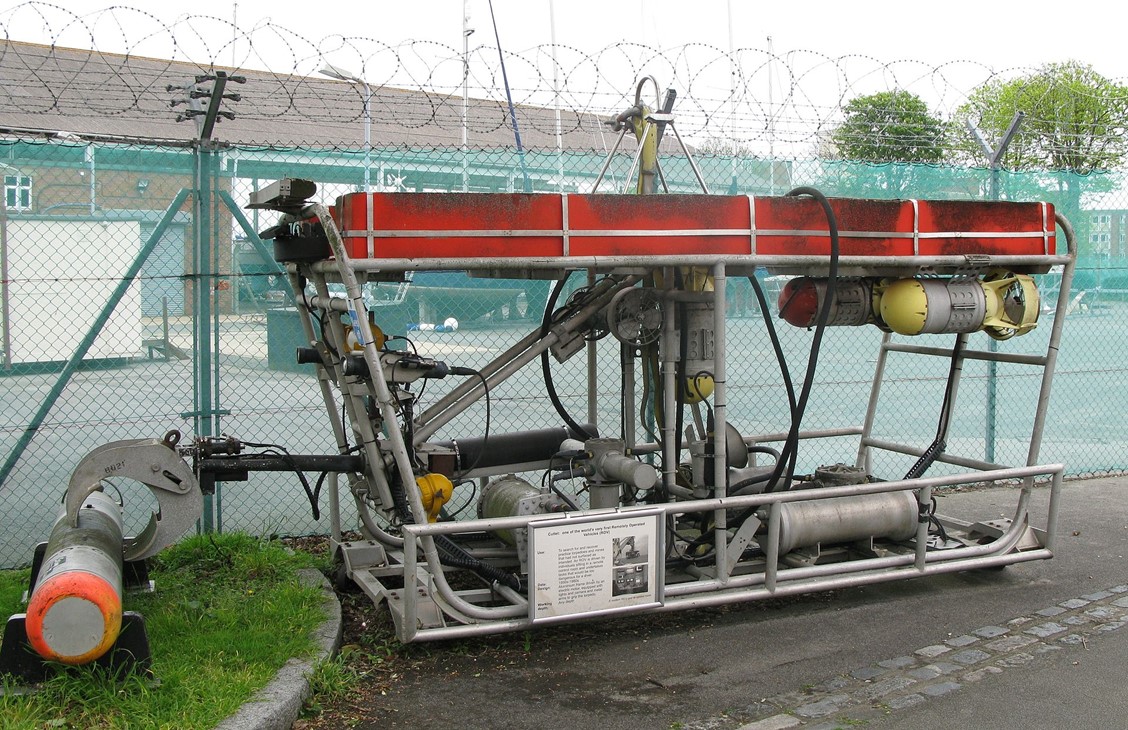
Image 2: A Royal Navy ROV (Cutlet) used in the 1960s to retrieve practice torpedoes and mines.
In the 1970s the offshore Oil & Gas industry joined the game, and this led to the development of work-class ROVs that could handle various tasks at depth, equipped with propulsion systems, manipulators (robotic arms), cameras and other sensors required for their subsea activities.
Scientific research has pushed the limits of depth of operation of ROVs, regularly exploring depths of 6500m (4 miles) but also visiting the deepest part of the oceans at 10.909m. One of the limiting factors for this activity is the functionality and management of the umbilical length.
ROVs come in all shapes, sizes and capabilities, from small observation ‘eyeball’ units used for visual inspections (small enough to hold in your hand), to van-sized work class ROVs that can undertake complex subsea intervention tasks and may require large vessel fixed ‘launch and recovery systems’ (LARS) and also Tether Management Systems (TMS) that maintain the umbilical/tether integrity whilst subsea by actively controlling the amount of tether deployed. Both the LARS and the TMS need trained operators to ensure safe and correct operation. Additionally, ROV pilots, Superintendents and Engineers (hydraulic/electrical) may be required on a deployment.
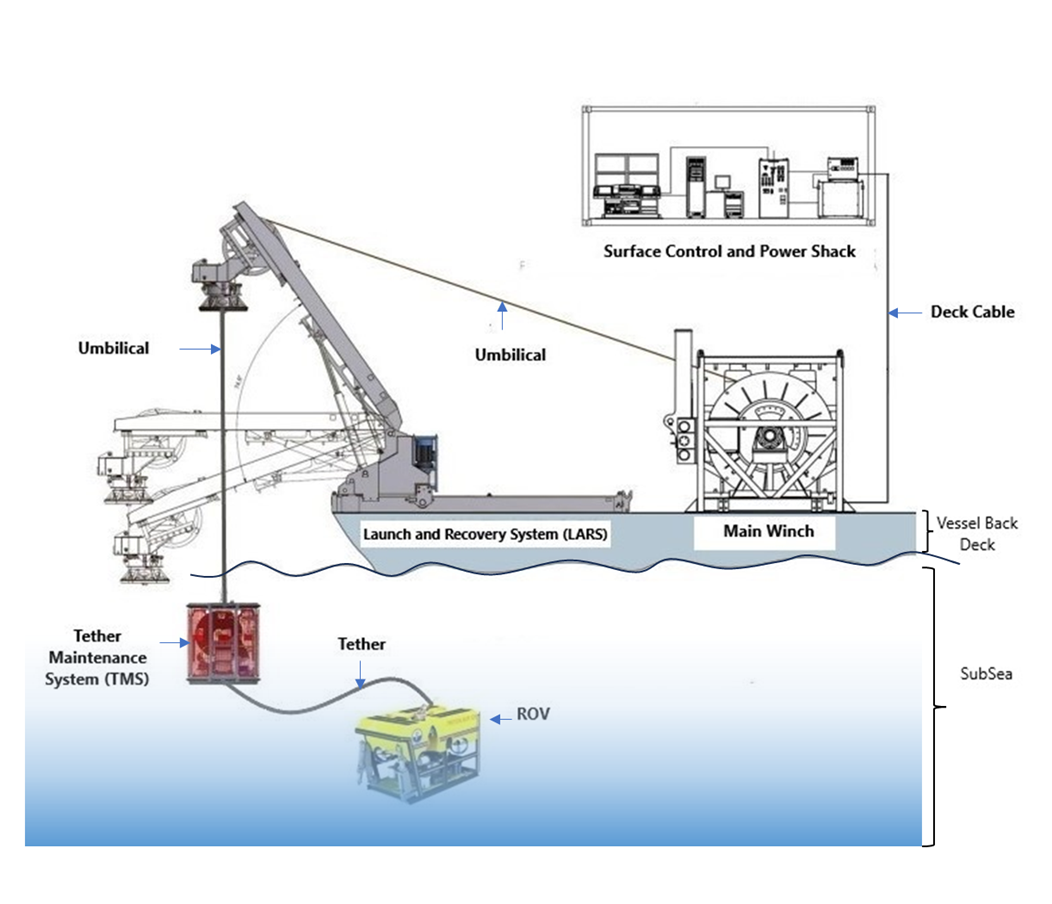
Image 3: Schematic of a launched work-class ROV highlighting LARS and TMS systems
As mentioned, ROVs come in all shapes and sizes according to their work requirement. Different ROV companies may manufacture ROVs that look similar but operationally and upkeep requirements may be very different. Often this means that rather than generic operators, they require operators that have experience with that specific system.
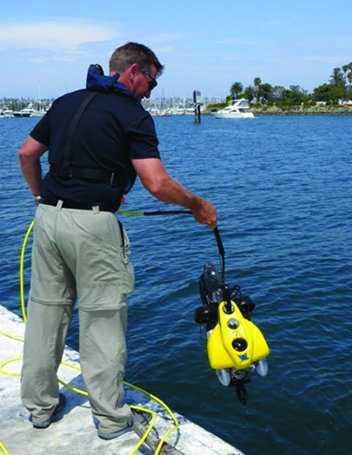
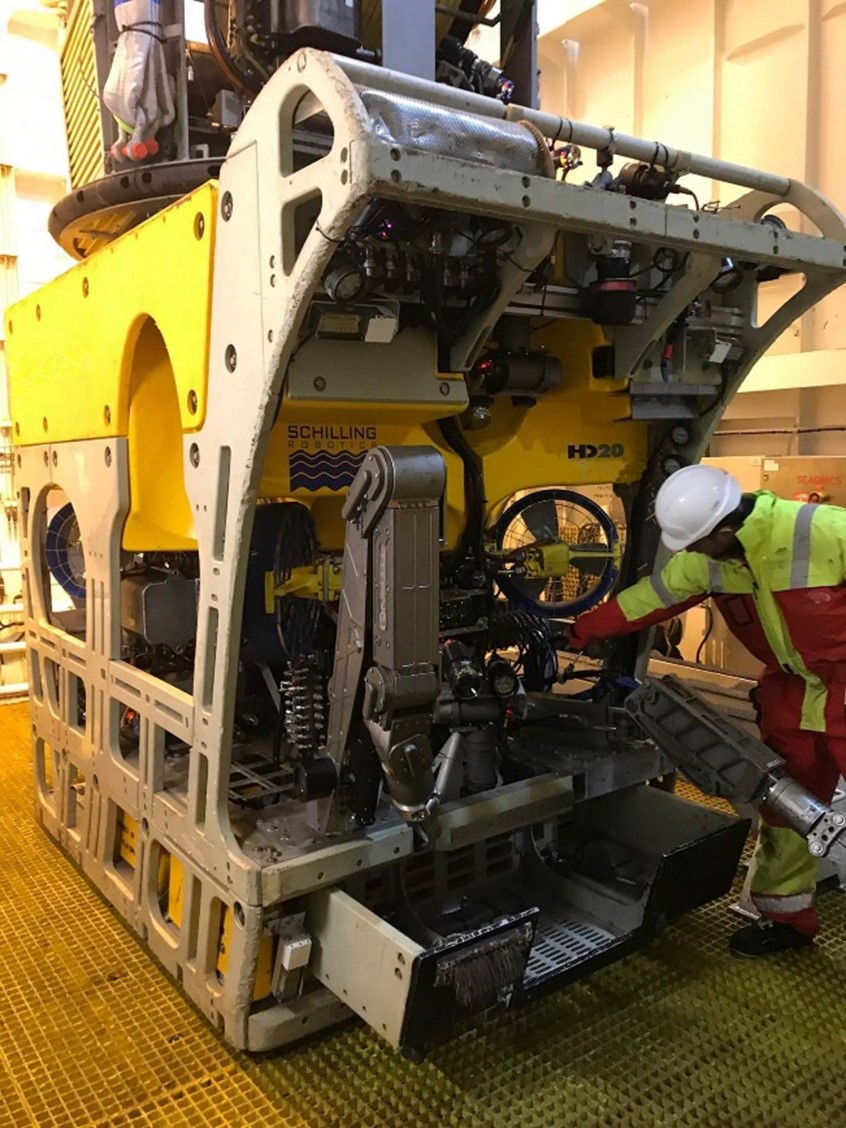
Images 4 and 5: Small observation ROV and a work class ROV
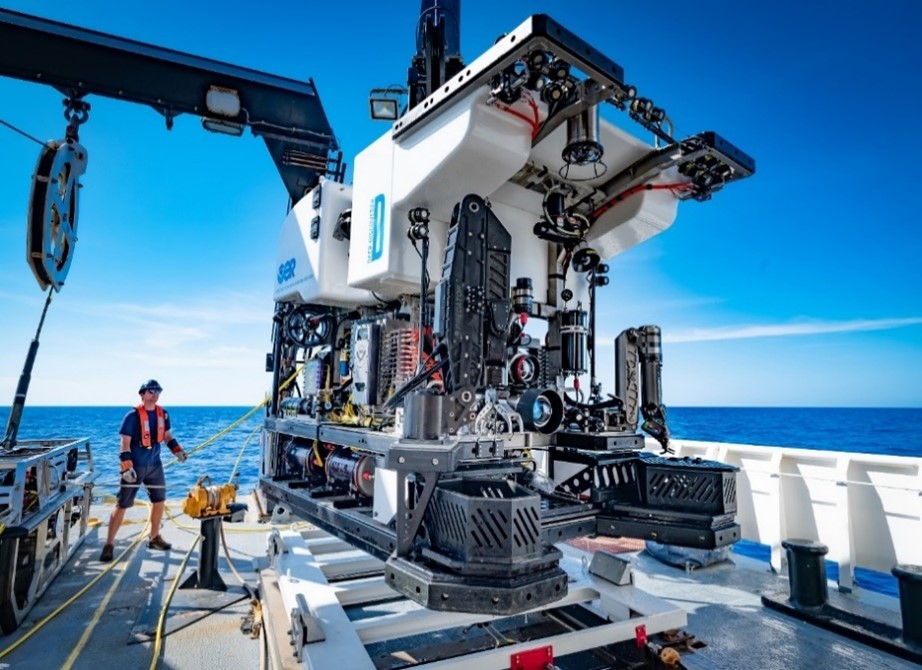
Image 6: Research ROV
Because there are many different functional requirements, the ROVs are designed for these specific tasks. These include trenchers for burying pipelines or cables (think a subsea tractor that crawls along the seabed on tracks or is towed on skids from the vessel) or ‘Mass Flow Excavators’ (think a massive hair drier that blasts away the seabed with water) or subsea grabs for debris removal (think the toy grabber machines that you see at fairs!) The most common within the sector that Atlas Professionals operate are the observation and work class ROVs, often working hand in hand with Survey teams they act as platforms for a range of survey sensors but also use their multifunctional robotic arms to perform very agile manipulation of subsea assets.
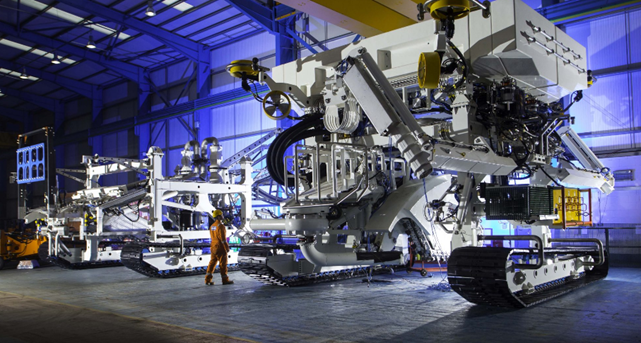
Image 7: Trencher
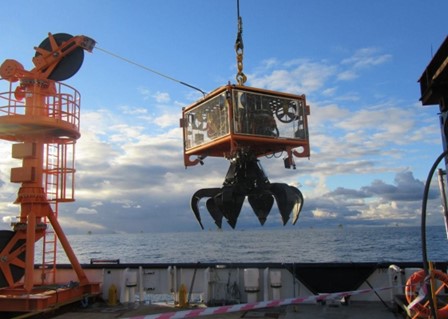
Images 8: Rock grabber
With the drive for offshore safety, versatility, efficiency, and cost saving comes the new generation of subsea robots: AUVs (Autonomous Underwater Vehicles). These are basically ROVs without the tether (and hence their own propulsion)! Think torpedo! They are pre-programmed to swim off, do their surveys and return to download their data! These were spawned from academic research requirements and developed from the late 1950s. Today’s AUVs have applications in offshore wind farms, Oil & Gas, research, and defence/military.

Image 9: Launching a military AUV
Along with the variety in ROV types there are many specialised roles within the ROV market, from specialized pilots to qualified inspection engineers, to tooling technicians.
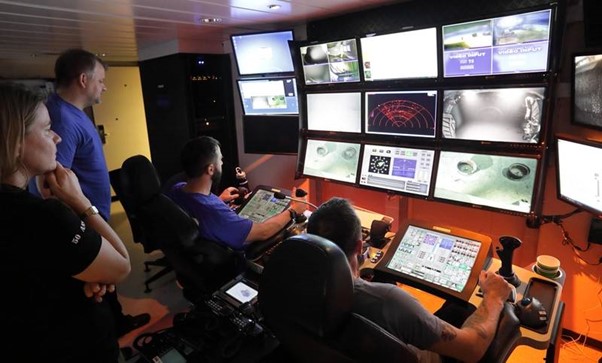
Image 10: ROV control centre
So, in summary, ROVs are utilised to perform varied tasks including:
• Commercial subsea inspection, maintenance, and repair of underwater infrastructure, eliminating the risk of utilizing divers.
• Interaction with subsea assets using cameras, lights, sonars, sensors, and robotic arms.
• Perform subsea engineering tasks including debris removal, pipeline and cable burial.
• Assisting in the data gathering of geological formations, including seismic operations.
• Observe, interact and monitor the subsea environment including the deepest areas.
• To explore the biodiversity of underwater ecosystems and study deep-sea organisms in their previously unreachable natural habitat
• Underwater Archaeology: Allowing documentation of subsea artifacts.
If you would like any further information on the ROV industry then reach out to Paul Hampton, Business Development Manager, or Julie Swift, Team Leader in the Newquay office. Do you want to explore how Atlas Professionals can elevate your ROV career? Follow this link to browse our latest vacancies and to apply to those that you see fit!
This blogpost uses images that are not owned by Atlas Professionals for educational purposes. All rights reserved to the copyright owners.
.png)
.png)